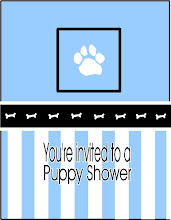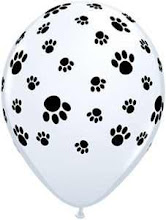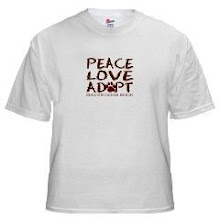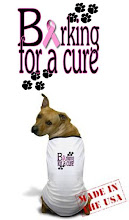Friday, July 20, 2007
Neutering Your Dog
Breeding is simply not an option for most dogs. However, if your dog is not neutered and is not allowed to breed, he or she can suffer from social problems and destructive behavior.
Neutered female dogs no longer experience heat cycles twice a year, nor unwanted pregnancies. Neutering your female dog will also help eliminate the mood swings associated with hormone production.
Neutered male dogs wander less. Additionally, they will empty their bladders because they are full, rather than to leave scent messages for other male dogs. And, although neutered male dogs will still retain their territorial guarding behavior, they are less likely to act in an aggressive manner with other male dogs.
Neutering is not without its drawbacks, but they are small compared to the alternative. The most common side effect of neutering your dog is weight gain, but this can be controlled by changing your dog's diet.
Neutering has little effect on your female dog's behavior, although in rare cases it can cause urinary incontinence.
As a dog owner, it is your responsibility to be sure that your dog is cared for properly, and this includes having him or her neutered to avoid unwanted pregancies.
~Lisa Pallardy
___________________________
http://www.barktalk.com/
Wednesday, July 18, 2007
Housetraining a puppy
- Consistency
- Realistic goals
- Rewards for appropriate behavior
Fortunately, a dog is instinctively unwilling to soil its den (i.e., it's nest/bed/crate/house). To housetrain your puppy, then, you must teach your dog that it's den is actually the entire house.
You must be vigilant in training your puppy. Young puppies need to empty their bladders about once every hour, and especially after a meal, following play, exercise, excitement, or when waking up.
Pay attention to your dog's signs. Many dogs will start to run or circle, sniffing the floor. When you see these signs, immediately take your dog to the acceptable spot for him to do his business, either outside, or, if you don't have easy access to outdoors (for instance, apartment dwellers), then choose an area in your home or apartment where it is acceptable for your dog to eliminate.
If remaining inside, be sure this place is easy to clean, and away from distractions. Lay down a plastic sheeting and cover it with newspaper, or use a litter tray or commercial disposable pet pad.
Once you've taken your puppy to his appropriate place, be still and silent while he goes about his business. As soon as he begins to relieve himself, reassuringly speak a word (or words) that you've chosen to associate with this good behavior, and use this word or words consistently. Eventually, your dog will associate this word or phrase with their need to go.
After your puppy has finished, give lots of praise!
Accidents will happen! When you see your dog relieving himself in the house, get his attention by calling his name and attracting him to the door or the designated area inside. Encourage your puppy to follow you to the appropriate place, and then allow him to finish his business. Keep him in another room while you clean up his mess, and DO NOT punish him.....it's too late at this point for your dog to understand that the punishment is related to his relieving himself in the house, and he may think he's being punished for going where he was supposed to!
~Lisa Pallardy
___________________________
Read more articles about dog care and training at http://www.barktalk.com/
Monday, July 16, 2007
How long can I leave my dog at home alone?
Dogs are social animals. Spending large amounts of time alone can be difficult for them, causing them anxiety that could lead to inappropriate behavior, such as urinating or defacating in the house, destructive behavior, loss of appetite, restlessness, irritability, even depression.
Imagine for a moment the first time you left home for any length of time when you were a child....whether it was summer camp, a sleep-over at a friend's or cousin's house, or even your first day of school. No doubt, you were inundated with feelings of distress, restlessness, inability to concentrate, irritability, even physical ailments such as a stomach ache.
Your new puppy experiences these same feelings when separated from his "people" for prolonged periods of time.
When your brand new puppy is taken from his mother and siblings to live with you, he experiences his first pains of separation. When he wakes in the middle of the night for the first few nights, he is fearful and confused....where am I? Where is my mother? Where are my littermates?
Fortunately, however, your new puppywill quickly transfer his attachment from his dog family to his new human family. And usually, within a few weeks (sometimes months), your puppy will learn to be seaparated from his people for short periods of time without any undue suffering.
Sometimes, however, this isn't the case. Some dogs, for many reasons, never learn how to cope with separation, and each and every time you leave your dog alone, he is filled with inexplicable anguish. And in today's world, where most everyone is always on the go, if your dog is unable to adjust to being alone, he -- and you --- could be in for a world of agony.
The best way to teach your dog to be alone, is to start early when he is a new puppy; however, if you adopt an older dog, he, too, will benefit from being taught immediately about the inevitable fact of being left alone.
First, give your new puppy a few days to get used to his new environment. Then, once he seems comfortable with you and with his new home, "stage" a calm departure, even if you just leave the house to go outside for a few minutes, and then come right back in. When you come back into the house, casually greet your dog, and then go about your business. Continue this over the next week or so, gradually increasing the amount of time that you are gone, until it's normal for him to know that you may be gone an entire day, but that it's no big deal.....you will return.
Remember, dogs are social animals, and need social interaction. If we want our dog to respond calmly, we need to act calmly. A dog who is gradually made accustomed to being left alone in a calm manner, is less likely to become noisy and destructive when left home alone.
~Lisa Pallardy
_______________________--
Read more articles on dog care and training at http://www.Barktalk.com
Sunday, July 15, 2007
Choosing a Boarding Kennel for Your Dog
If you decide you need to leave your dog behind while you travel this vacation season, a boarding kennel can give your four-legged baby top-quality care, plus give you peace of mind knowing that s/he is well taken care of while you’re away.
The first thing to consider when choosing a boarding kennel is to plan ahead. Good kennels tend to fill up fast, so you’ll want to decide on a kennel well in advance to be sure the kennel will be available to keep your dog on the dates you’ll be gone.
The best source for finding a good kennel is to ask for recommendations from people you know. Check with family, friends, neighbors, even your vet. Once you’ve got a few recommendations, however, it’s important that you do your own background check.
Although it may seem incredibly time-consuming, it’s extremely important that personally visit each kennel you are considering so that you can properly evaluate its conditions. You’ll want to be sure the kennel looks and smells clean, and that there is adequate ventilation, as well as light. You’ll want to make sure the temperature in the kennel isn’t too warm, or to cold. Verify that all pets that are kept at the kennel are required to be current on their vaccinations, including the vaccine for kennel cough.
Check that each dog has his own indoor/outdoor run. If there is no outdoor run, ask the kennel staff about any set schedule for providing exercise for your dog. You’ll also want to check that adequate bedding is provided for your dog. And if the floor is concrete, be sure the bedding is up off the concrete floor.
If your state requires boarding kennel inspections, make sure you see a license or certificate displayed which shows that the kennel meets the state mandated requirements.
Check with the kennel staff to find out if the kennel is a member of the American Boarding Kennels Association (ABKA). This is a trade association that was founded by kennel owners and operators to promote professional standards of pet care. To become a member of this association, kennel owners are required to follow a strict code of ethics.
Ask the kennel owner about his/her procedure in the event of an emergency, and find out if any other services are available for your dog while you’re away, such as bathing and/or grooming. And be sure to discuss with the staff any medical or behavioral problems about your dog that may be important.
It’s also extremely important that you understand exactly how the kennel’s rates are calculated!
You’ll also want to check with your local Better Business Bureau to be sure no complaints have been filed against the kennel you are considering.
Once you’ve decided on a kennel, you’ll want to take some time to prepare your dog. Be sure s/he knows basic commands and is well socialized. If you’re planning a log vacation (a week or more), it’s a good idea to consider boarding your dog for a 2-3 day “practice” run. This is a good way to find any potential problems (either with your dog or with the kennel) before leaving your dog for an extended period of time.
When the day arrives, you’ll want to remember to pack any medication your dog may be taking. If your dog is on a special diet, remember to include enough food for his entire stay.
Type up a list of emergency contact phone numbers to give to the kennel staff, including your vet’s phone number, your phone number, and the name and phone number of a friend or relative who lives in the area who is willing to be a “back-up” in case you can’t be reached.
When you arrive at the kennel, it’s always a good idea to go over a quick reminder of any medical or behavioral issues with the staff. Although you’ve previously advised them of any of these issues, and it is written down in your dog’s chart, a quick verbal reminder is a good idea.
Now, just hand your dog over to the staff, say a brief good-bye, and promptly leave. Just as with a child, a long, drawn-out, emotional departure will only cause your dog to become confused and upset.
You’ve done your research and found the best possible care for your beloved dog. Now trust that he’s in good hands and will be well taken care of. Go have a good time!
~Lisa Pallardy
_________________
Healthy Companion Leisure Natural supplement to assist in relaxing dogs. Ideal for traveling, extended kennel stays, visits to the vet, when houseguests arrive, or other times of stess or agitation
Start a Dog Day CareThe Pet Care Industry is Booming. Learn to start your own profitable business.
Got a New Puppy?Send New Puppy Adoption Announcements and tell the world!
FrontLine Flea & Tick Medicationfor your Dog & Cat
Advantage -Flea control for your Dog & Cat 1-800-PetMeds -Get the *Guaranteed Lowest Prices* and Free Shipping for allyour Pet's Health Care needs! Frontline, Advantage, Heartgard, and more!
Great Gifts for Great Dogs. And The People They Own.
Start a Doggie Day Care. Learn to start your own profitable business.
Pet Insurance. Shop and compare our list of recommended pet insurance carriers.
Saturday, July 14, 2007
Traveling With Your Dog by Car
If you plan to take your dog with you on a trip that involves a lot of traveling, the Humane Society of the United States suggests the following tips to help reduce your dog's stress, as well as some real risks that may be involved in traveling with your dog:
- Several weeks before taking your dog on a long trip (more than a few hours), begin familiarizing him with car travel by taking him on frequent small trips, gradually lengthening the travel time.
- Be sure to establish firm car routines, such as where your dog will sit, whether or not you will use a crate, and whether or not he will be allowed to play with a favorite toy while traveling.
- Schedule an appointment with your veterinarian to make sure he is healthy. If you are traveling out of state, it's also a good idea to ask your vet for a "health certificate." This document verifies that your dog has been examined within the past 10 days, and that in the vet's opinion is in good health and free of communicable diseases.
- Be sure your dog us up-to-date on all vaccinations.
- If your dog is a nervous traveler, talk with your vet about whether or not it is advisable to give your dog a sedative or tranquilizer. If a sedative or tranquilizer is recommended and/or prescribed, try giving it to your dog a week or so before your trip so you can monitor your dog's reaction to it while still home and close to your vet.
- Be sure to pack your dog's regular food, and even bring water from home. Give your dog small meals to avoid upset stomach.
- While traveling, try to stop for exercise at the usual times during the day when you usually exercise your dog so that he can stay close to his regular schedule. While your dog is outside of your car, be sure you have a firm grip on his leash in case he becomes startled and tries to run away. And it's extremely important that your dog is always wearing identification that lists your address and phone number, both your home, and your cell (or the phone number of where you are going).
- NEVER leave your dog alone in the car!
- Try not to leave your dog alone often when you reach your destination. Remember, he's in a strange place, doesn't understand that you will be coming back, and he may become extremely nervous in your absence, resulting in inappropriate behavior while you're gone.
While we love our dogs and want to take them with us wherever we go, it's important to consider your dog when making travel plans, and determine if he might not be better off staying at home, with a good friend to visit and care for him in your absence. Or, if staying at home isn't practical, find a good boarding facility to leave your dog.
Next blog.... What to look for when boarding your dog.
~Lisa Pallardy
______________________-
Read more articles on dog care and training at http://www.barktalk.com/
Thursday, July 12, 2007
The Importance of Toys for Your Dog
If you're a veteran dog owner, no doubt your house is scattered with various dog toys: those that squeak, those that are just for chewing, those for a raucous game of tug-of-war, and those to be chased.
But did you know that toys are among the most important items you can provide for your dog?
It's best, however, not to overwhelm your dog with too many toys at once. For example, chewable toys belong only to your dog. They are the toy(s) he plays with on his own, without any interaction from you. However, the squeak toys and chase toys and tug-of-war toys should belong to YOU, not your dog. So keep them out of sight, except when you're ready to play with your dog. This makes them much more interesting and exciting for your dog.
Plus, by only brining out interactive toys when it's time for interactive play, which not only encourages bonding with your dog, but also is good strength training, it also helps communicate to your dog that the toys belong to you, and that you are in charge -- an important lesson for a new puppy to learn while finding his place in the "pack."
Be careful to never give your dog an old shoe or slipper to play with as a chew toy! He can't tell the difference between an old shoe and your brand new, $280 Stuart Weitzman pumps, and will have just as much fun with the expensive pair of shoes!
While it's imporant that you don't overwhelm your new puppy with too many toys, be sure he or she has a few toys to play with individually, or s/he will create his/her own chew toys from items around your home, such as table legs, throw rugs, shoes, electrical cords, and yes, even your dirty underwear.
________________________
Read more articles about dog care and training at http://www.barktalk.com/
Looking for the perfect designer dog collar? Check out our selection from Urban Hund and Diva Dog, for your fashion-forward four-legged best friend. He will be the envy of all the other dogs at the park!
Wednesday, July 11, 2007
How to Give Medicine to Your Dog
If you've ever attempted to give your dog a pill, then you know this is no easy feat!
The simplest way to give medicine to your dog is to hide it in his food. In fact, there are commercially available dog treats that are hollow on the inside, made just for this purpose. However, if you don't have a hollow dog treat available, then your next best bet is to hide the pill in a piece of meat or bread that has been coated with peanut butter. (Always check with your vet first, however, because some foods should not be given with certain types of medicine.)
If the "hide the dog's pill in his food" method doesn't work, you may have to give the pill directly by mouth. (Don't try this if you think your dog may bite you!):
- Tell your dog to sit. Then, while opening his mouth with one hand, hold his head upward and drop the pill as far as possible into the back of his throat, over the hump of his tongue.
- Next, while gently holding your dog's head up at a slight angle, close his mouth and carefully massage his throat. When you see him swallow and then lick his lips, you'll know the pill has successfully been ingested.
- Praise your dog for his good behavior!
If after several attempts, you simply cannot get your dog to swallow a pill, call your vet and find out if your dog's medication is available in liquid form, which can more easily be syringed into your dog's mouth.
How to give your dog liquid medicine
Give a liquid medication to your dog entails a slightly different technique than giving him a pill.
- After telling your dog to sit, hold his upper jaw (just as you would for giving him a pill); however, keep his head level, rather than tipping it upward, so he won't choke.
- Place the syringe filled with medicine along the side of his mouth, between his teeth and gum, and squirt the medicine into his mouth. (Don't attempt to squirt medicine into the back of his throat! It could go down his windpipe and cause him to choke.)
- Close your dog's mouth and gently rub his throat until he swallows.
- Praise your dog for his good behavior.
Most important, be sure to give medicine to your dog exactly as your veterinarian prescribes, and continue giving it until it is completely gone, even if your dog appears to feel better.
~Lisa Pallardy
____________________________
Read more articles about dog care and training at http://www.barktalk.com/
Planning a birthday party for your dog? See my distinctive line of dog birthday party invitations, created for the sophisticated pet owner.
Tuesday, July 10, 2007
Why does my dog fart so much?
Flatulence (the polite term for "fart"), as well as burping, is usually caused when your dog swallows too much air when eating quickly. The same thing happens with humans.
Your dog's diet could also be contributing to his excessive farting. Foods that contain soy, and other foods that are highly fermentable, as well as uncooked greens, can all cause excessive flatulence in your dog.
To help reduce the farting problem, try feeding your dog several small meals of low-fiber food that is easy to digest. There are also some over-the-counter products, such as activated charcoal and simethicone (OTC strength), that help absorb excess intestinal gas.
If your dog doesn't appear to be in pain, then his flatulence problem is probably more of a concern for you than it is for him!
_________________________
Read more informative articles about dog care and training at http://www.BarkTalk.com
Monday, July 09, 2007
Qualities of a Good Veterinarian
While it would be ideal to find a veterinarian who is honest, punctual, easy to get along with, willing to accomodate you, loves your dog, has all the best, newest, and top-of-the-line diagnosing and treatment equipment, whose office is close to where you live, has reasonable prices, is available 24 hours a day, and has an incredible support staff that mirrors all of these great qualities, the reality is, you may have to choose from among the qualities that are most important to you, and then find a veterinarian who is the best match for you and your dog.
Once you've determined which traits and qualities in a veterinarian are important to you, the best place to start for a truly objective opinion is other patients. Talk to friends and ask about their veterinarians. Are they happy with the service they receive? Is their vet caring and considerate of their opinions, providing various medical treatment options? Or does he make choices for them, and simply tell them what to do? What is his/her philosophy on end of life issues? Will he/she do whatever it takes to save your pet, regardless of the expense? Or does s/he believe that diagnosing and treating an older dog is a waste of medical resources? What is YOUR opinion on this topic?
The answers to what is important to you are neither right or wrong. It is simply important that your veterinarian share these beliefs with you if you want to find the best possible care for your dog.
It is extremely important that you feel comfortable with the veterinarian you choose, so that you aren't intimidated and unlikely to ask important questions about the care of your dog.
Before deciding on a veterinarian, it's best to visit their facility and ask for a tour. Is the facility clean and well lighted? Is the staff friendly and accomodating?
Once you've narrowed down your selection, schedule a "new patient" appointment with the veterinarian so you'll have an opportunity to observe him/her actually interacting with your dog. Additionally, the vet will have the chance to meet your dog as a healthy, thriving pet, and would, therefore, have something to compare it to later, if you take your dog in because of a medical problem.
Similar to finding your own personal physician, finding a veterinarian involves lots of questions, but also "gut feelings." If you aren't comfortable, if you feel intimidated, if you don't like the way the facility looks or "feels," if the staff isn't friendly and accomdating, if any of these things triggers a "bad feeling" with you, it's best to trust that feeling and look for another veterinarian who more closely matches your beliefs and philosopies regarding the care and treatment of your best friend.
~ Lisa Pallardy
__________________________________________________________________
For more informative articles on dog care and training, visit http://www.BarkTalk.com
Need a gift for your dog? Need a gift for a dog-lover in your life? Looking for a t-shirt for a dog lover? Throwing a birthday party for your dog? Visit BarkTalk.com for all your pet needs!
Sunday, July 08, 2007
Tips for Keeping Your Dog Safe in Hot Weather
As the mercury rises, it’s extremely important to make sure your dog is safe. Dogs can suffer from dehydration, heat stroke, even sunburn!
Following are some tips to help keep your dog safe in the hot weather:
- Exercise is just as important in the summer, but do it early in the morning or late in the evening when it’s not as hot or humid.
- Be sure your dog has lots of shade. It’s always a good idea to bring your dog inside in a cool house during the hottest part of the day.
- WATER, WATER, WATER! Be sure your dog’s water bowl is kept filled with COOL, clean water.
- NEVER, EVER, EVER, EVER leave your dog alone in a car! Even if you leave the windows cracked, and park in the shade. A parked car can rise to dangerous temperatures in only a matter of minutes, causing heat stroke or exhaustion, resulting in death.
- Elderly and/or overweight dogs or dogs with illnesses such as heart or lung disease will need even extra special care in hot weather. And certain breeds, including pugs, bulldogs, Lhasa apsos and shih tzus, also need extra attention on hot days.
If your dog appears to be showing signs of heat stroke or exhaustion (listless, panting, disoriented), take him to your vet immediately!
_______________-
~Lisa
Lisa Pallardy, President
BarkTalk
http://www.barktalk.com/
Pet Greetings with Panache
Saturday, July 07, 2007
How to Give Your Dog a Bath
- Dilute the shampoo with 5 to 10 parts water before starting (this will make it easier to distribute the shampoo over your dog's hair coat.
- The ideal water temperature for giving your dog a bath is between 95 and 100 degrees Fahrenheit.
- Wet your dog's entire coat thoroughly (a spray nozzle works best)
- Apply the diluted shampoo over your dog's entire coat. If your dog is short-haired, you can rub the shampoo into his coat; if your dog is long-haired, then squeeze the shampoo through his hair to avoid matting
- Use a washcloth to carefully clean around your dog's face, being careful to avoid his eyes and ears.
- If you're using a medicated shampoo, for best results, leave the shampoo in contact with your dog's skin for at least 10 minutes
- Rinse your dog's coat thoroughly to avoid skin irritation, and pay special attention to the groin, the underside of the tail, and the feet (where shampoo residue often collects)
- Squeeze excess water from your dog's coat using your hands, then gently blot with a towel.
- Gently brushing your dog's coat as it dries will remove tangles and help "fluff" his coat
- If you use a hair dryer on your dog, be sure to keep the heat setting on low to avoid damaging your dog's hair, or irritating his skin
_______________________
Read more articles about dog care at http://www.barktalk.com/
Woof!
~Lisa
Need a gift for the dog lover in your life? Check out my exclusive line of T-shirts for dog lovers.
Got a New Puppy? New Puppy Adoption Announcements and more!
Start Your Own Dog Day Care Learn how to start a professional dog day care business
Friday, July 06, 2007
Dog Trainers: Tips to Find the Best Fit for You and Your Dog
WHAT TO LOOK FOR IN A GOOD TRAINER FOR YOUR DOG
When you train together, you and your dog learn to work together as a team. When seeking a dog trainer, keep these tips in mind:
- A good dog trainer knows several different ways to teach a rule
- A good dog trainer understands your dog's temperament
- A good dog trainer understands what is motivating your dog's undesirable behaviors
- A good dog trainer appreciates your preferences
- A good dog trainer chooses a training style that best fits you and your dog
- A good dog trainer continually re-evaluates and makes customized adjustments throughout the training process
_________________________
Dog birthday parties are all the rage! BarkTalk.com creates a distinctive line of Dog Birthday Party Invitations, Puppy Shower Invitations, New Puppy Announcements, and Dog Thank You Cards. If you're a business owner interested in a wholesale order, contact lisap@barktalk.com










